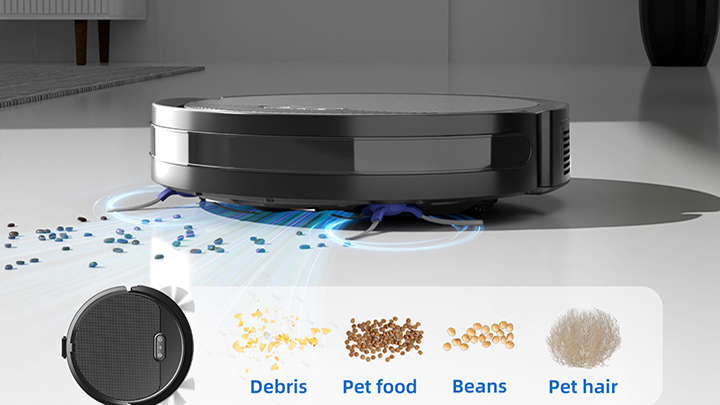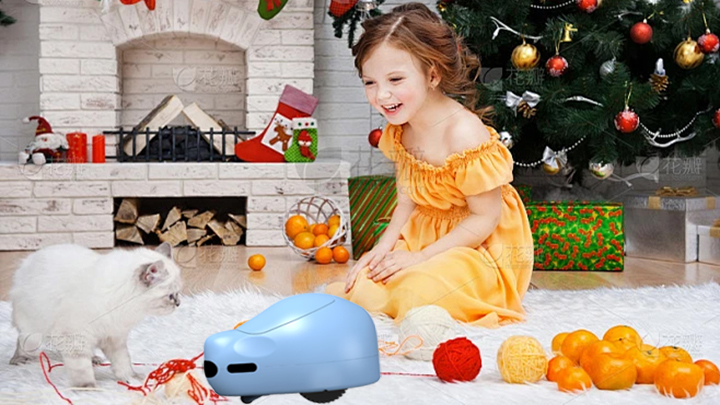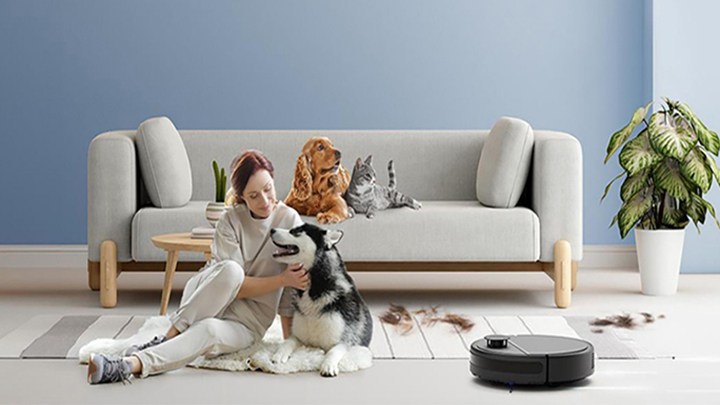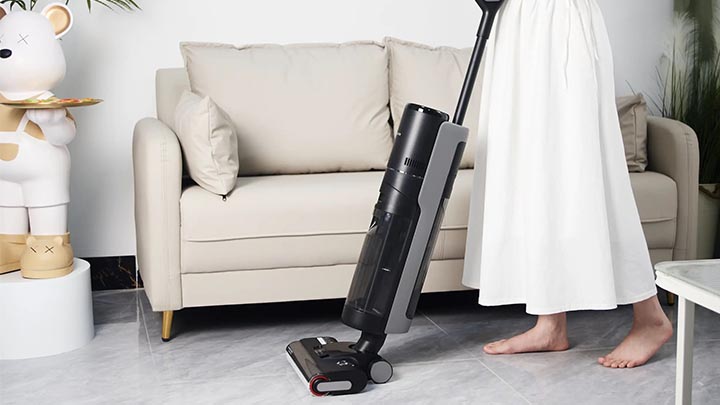How to help a Cat Adapt to a Smart Feeder as Quickly as Possible
Helping a kitten adapt to a smart feeder quickly requires patient guidance and a gradual adjustment process to avoid making it resistant to the new device. Here are specific steps and suggestions:1. Familiarize the cat with the feeder in advance• First, place the unplugged feeder in the cat’s familiar feeding area (such as its usual eating corner). Do not rush to use it; let the cat get used to this "new object" by sniffing, observing, or even gently touching it to reduce strangeness.• You can place some of the cat’s favorite snacks or toys around the feeder to associate the feeder with "pleasant experiences."
https://www.pureatic.co/collections/pet-products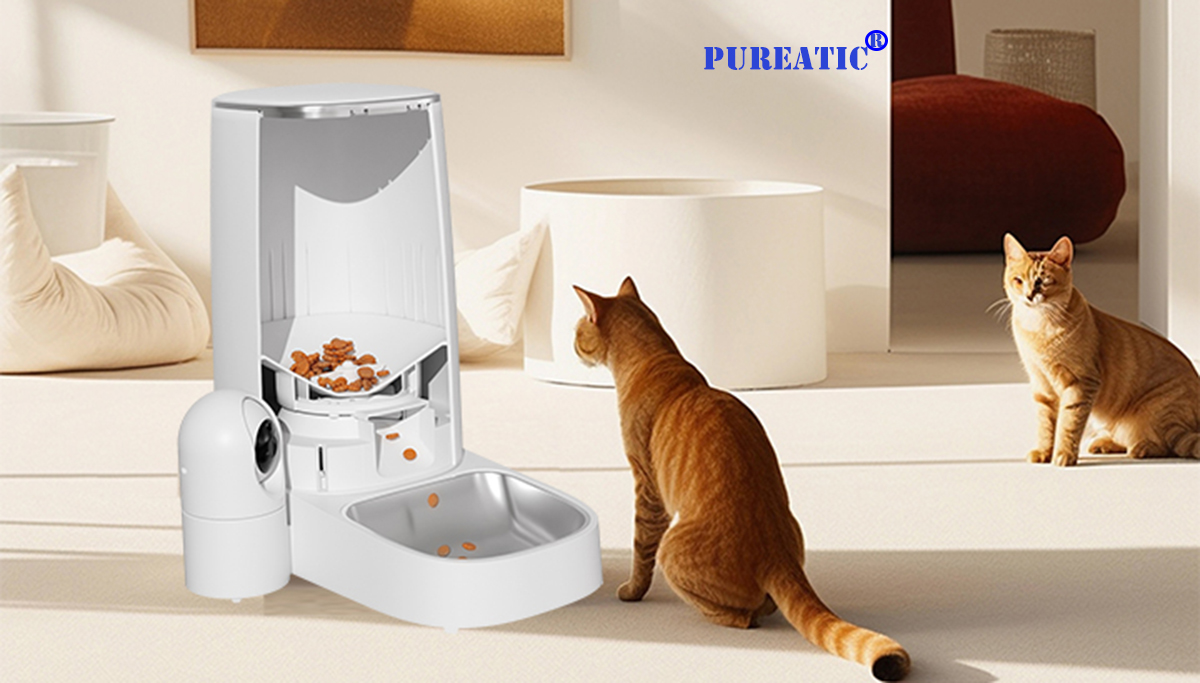 2. Gradually transition to feeder feeding• In the early stage, do not completely replace manual feeding. Instead, put part of the food in the feeder’s bowl while manually feeding the other half, so the cat learns that food can also be obtained here.• If the feeder has an automatic food-dispensing function, manually trigger the dispensing first (e.g., press a button to make food fall) to let the cat observe and get used to the sound and process of "food coming out," preventing it from being startled by sudden noises.
2. Gradually transition to feeder feeding• In the early stage, do not completely replace manual feeding. Instead, put part of the food in the feeder’s bowl while manually feeding the other half, so the cat learns that food can also be obtained here.• If the feeder has an automatic food-dispensing function, manually trigger the dispensing first (e.g., press a button to make food fall) to let the cat observe and get used to the sound and process of "food coming out," preventing it from being startled by sudden noises.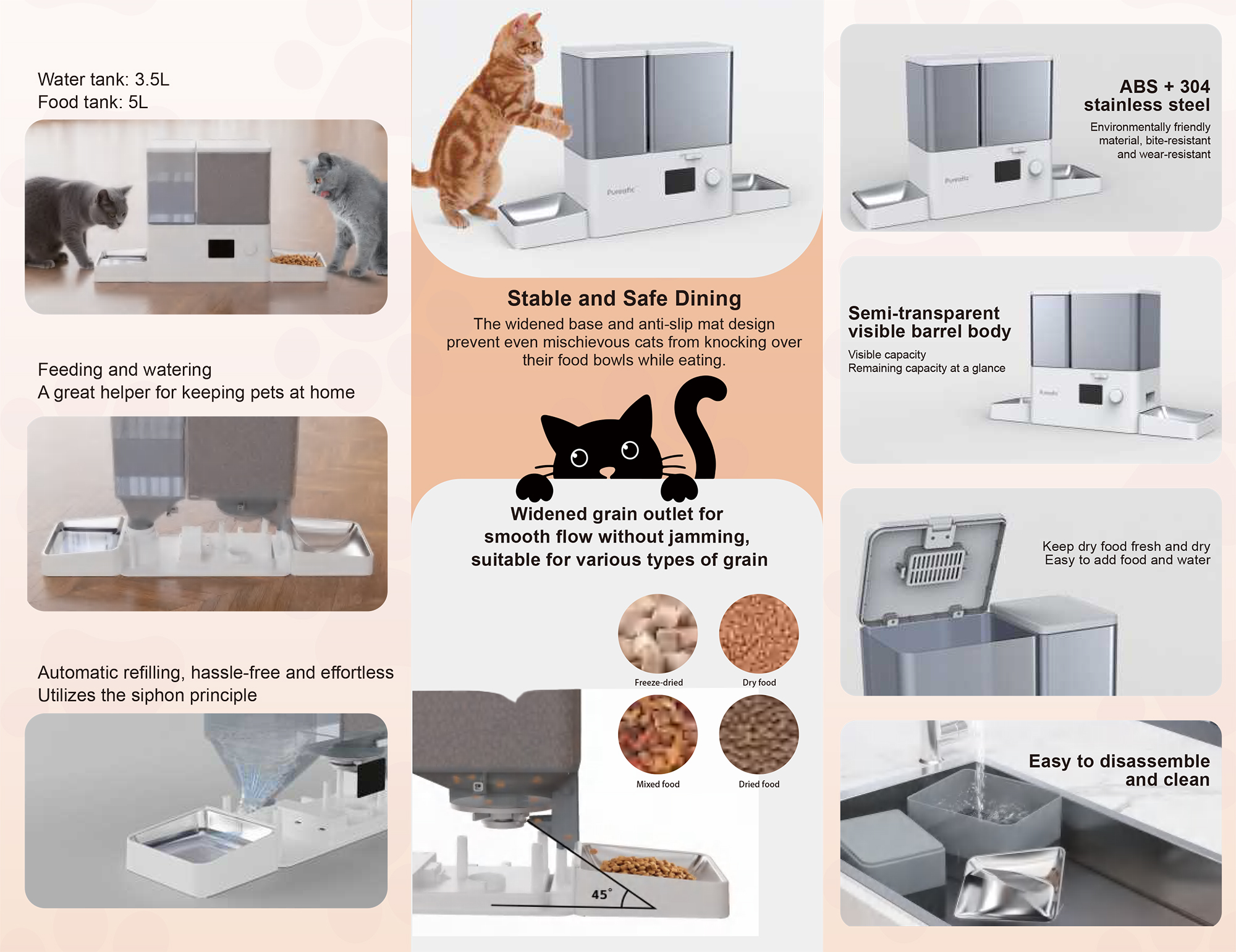 3. Use food appeal to guide• Put the cat’s favorite food (such as freeze-dried treats or canned food pieces) in the feeder’s bowl, or even place a small amount near the food outlet to lure it to approach and eat actively.• Keep the environment quiet during feeding. Avoid loudly disturbing or forcing the cat to approach the feeder; let it try in a relaxed state.4. Adjust the feeder’s settings and position• Ensure the feeder’s height is suitable for the cat (especially for kittens or senior cats). The bowl edge should not be too high to make it easy for the cat to lower its head and eat.• If the automatic food-dispensing sound is loud, you can first reduce the dispensing speed or temporarily wrap the bottom of the feeder with cloth to muffle the noise. Restore normal settings after the cat adapts.• Try to align the feeding time with the cat’s previous eating schedule to reduce discomfort caused by changes in routine.5. Provide positive feedback and patient companionship• When the cat takes the initiative to approach the feeder, sniff the bowl, or start eating, praise it in a gentle tone or stroke it gently to reinforce this behavior.• If the cat refuses to approach initially, do not force it. Give it enough time to adapt, and repeat the guidance steps daily. Most cats will gradually accept the feeder within 1–2 weeks.
3. Use food appeal to guide• Put the cat’s favorite food (such as freeze-dried treats or canned food pieces) in the feeder’s bowl, or even place a small amount near the food outlet to lure it to approach and eat actively.• Keep the environment quiet during feeding. Avoid loudly disturbing or forcing the cat to approach the feeder; let it try in a relaxed state.4. Adjust the feeder’s settings and position• Ensure the feeder’s height is suitable for the cat (especially for kittens or senior cats). The bowl edge should not be too high to make it easy for the cat to lower its head and eat.• If the automatic food-dispensing sound is loud, you can first reduce the dispensing speed or temporarily wrap the bottom of the feeder with cloth to muffle the noise. Restore normal settings after the cat adapts.• Try to align the feeding time with the cat’s previous eating schedule to reduce discomfort caused by changes in routine.5. Provide positive feedback and patient companionship• When the cat takes the initiative to approach the feeder, sniff the bowl, or start eating, praise it in a gentle tone or stroke it gently to reinforce this behavior.• If the cat refuses to approach initially, do not force it. Give it enough time to adapt, and repeat the guidance steps daily. Most cats will gradually accept the feeder within 1–2 weeks.
By letting the cat familiarize itself with the feeder’s smell, sound, and functions in a stress-free environment, and associating it with the pleasure of "obtaining food," you can help it adapt more quickly!


